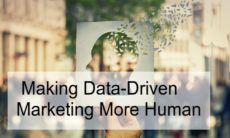Let’s view personalization through your visitor’s eyes
Anyone who has kept up with me on just about any social media platforms knows I’m all about music, and my guilty pleasure – always – would be investing in a new guitar. Or, y’know, guitars. More is better. And if I were to visit a music store that collected data on visitors, they’d know I like a certain make of guitar (I do) and that, for example, I bought two last year and have only bought one so far this year. Maybe, the bright salesperson thinks, “this guy needs need another axe.”
Poor personalization, which we see all the time, might recommend a guitar exactly like the ones I’ve already bought. Or just knowing I like “guitars” and recommending one that isn’t the right price point, lacks the right features, or doesn’t fit my needs. Or even worse, knows that there’s a warehouse full of unsold Gibsons and suggests a Gibson because that’s what “we need to sell.”
True, effective personalization on the other hand recommends a guitar maybe one level up from what I bought last time or that people just like me also own. It needs to take into account me. The real me. It knows my interests, my behaviors, my goals, my spending habits, and much, much more. But it understands me, not as a target or as a prospect. But as a human being.
High-quality personalization requires two types of data
What differentiates good personalization is an understanding of your visitor and what their preferences are. These preferences can be explicit or implicit.
- Explicit: Explicit data reflects what individuals have told you about themselves. Maybe you bought syndicated research or you have first-party information that human beings gave you. Explicit data often doesn’t feel like merchandising because you’re simply reflecting the best product for their particular needs based on what they’ve told you.
- Implicit: Implicit data on the other hand comes from looking at your customers’ patterns of behavior and performing pattern matching, suggesting content and products based on their activity or the activities of others like them. This is how behavior-based personalization works.
Study your visitor’s behavior
In behavior-based personalization, the behavior that’s being exhibited on the site leads us to believe the customer is trying to achieve a certain goal. Once we understand the goal, we can test to see if we’re right (I say “we” because content recommendation is what I do with SoloSegment.) We say, “Hey, here’s some recommended content that seems to match what you want. Does this help you progress your journey?” (Clearly, we’re not explicitly stating that out loud, but that’s essentially what the models are looking to understand). Even better, the model gets a little smarter every time, learns from customer behaviors, delivers another iteration – or iterations, in practice – and makes the experience better for the customer. You’d expect a good salesperson to do this naturally, right? So why not expect the same of your website… your 24/7/365 salesperson?
Again, this is all about understanding your customer’s goal. Personalized content recommendations make suggestions to a visitor about the best content they can check out next. If you have data about the topics customers are interested in, why not help keep them on topic? Why not help them find what they really want? And as the data helps you discern customer intent, move them towards their ultimate objective. Which, I should point out, is what you want anyway.
What is your visitor’s goal?
“How can we sell these guitars in the warehouse?” I’m sorry to say, is usually not the right question. It’s not about “What are we trying to achieve?” The right question is “What is the customer trying to achieve?”
That understanding, that focus on customer objectives and helping customers progress along their journey is what truly differentiates good personalization from bad. And its utility goes even beyond that; the better you understand your customer, the better you can merchandise whatever it is you sell, whether it’s enterprise technology, financial services, or, y’know, electric guitars. In practice, it doesn’t even matter whether it’s B2C or B2B.
What’s your customer’s goal? What data do you have about the customer? And did you use that data in ways that help them reach their goal? That’s not just great personalization. That’s music to my ears.
Interested in what implicit, behavior-based personalization can do to help you drive revenue for your business? Check out SoloSegment’s technology solutions right here.









